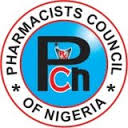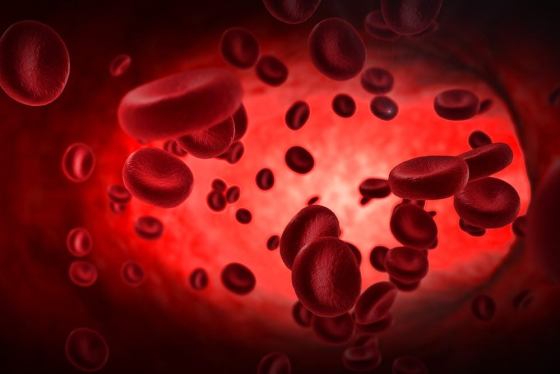Progeria (pronunciation: /proʊˈdʒɪəriÉ™/) (Hutchinson-Gilford progeria syndrome, HGPS, Progeria syndrome) is an extremely rare genetic disease wherein symptoms resembling aspects of aging are manifested at a very early age. Progeria is one of several progeroid syndromes. The word progeria comes from the Greek words "pro" (πρÏŒ), meaning "before" or "premature", and "gÄ“ras" (γῆρας), meaning "old age". The disorder has a very low incidence rate, occurring in an estimated 1 per 8 million live births. Those born with progeria typically live to their mid teens to early twenties. It is a genetic condition that occurs as a new mutation, and is rarely inherited, as patients usually do not live to reproduce. Although the term progeria applies strictly speaking to all diseases characterized by premature aging symptoms, and is often used as such, it is often applied specifically in reference to Hutchinson-Gilford progeria syndrome (HGPS).
Children with progeria, also known as Hutchinson-Gilford progeria syndrome (HGPS), generally appear normal at birth. By 12 months, signs and symptoms, such as slow growth and hair loss, begin to appear. The average life expectancy for a child with progeria is about 13, but some with the disease die younger and some live 20 years or longer. Heart problems or strokes are the eventual cause of death in most children with progeria. There's no cure for this condition, but ongoing research shows some promise for treatment. Usually within the first year of life, growth of a child with progeria slows markedly so that height and weight fall below average for his or her age. Motor development and intelligence remain normal.
Scientists are particularly interested in progeria because it might reveal clues about the normal process of aging. Progeria was first described in 1886 by Jonathan Hutchinson. It was also described independently in 1897 by Hastings Gilford. The condition was later named Hutchinson-Gilford progeria syndrome.
Signs and symptoms of this progressive disorder include:
Slowed growth, with below-average height and weight
A narrowed face and beaked nose
Hair loss (alopecia), including eyelashes and eyebrows
Hardening and tightening of skin on trunk and extremities (scleroderma)
Head disproportionately large for face
Thin lips
Visible veins
Prominent eyes
Small lower jaw (micrognathia)
High-pitched voice
Delayed and abnormal tooth formation
Diminished body fat and muscle
Stiff joints
Hip dislocation
Insulin resistance
Irregular heartbeat
When to see a doctor:
Call for an appointment with your doctor if your child does not appear to be growing or developing normally, including problems with hair loss, skin changes or slowed growth.
Causes
Researchers have discovered a single gene mutation responsible for Hutchinson-Gilford progeria syndrome. The gene is known as lamin A (LMNA), which makes a protein necessary for holding the center (nucleus) of a cell together. Researchers believe the genetic mutation renders cells unstable, which appears to lead to progeria's characteristic aging process. Unlike many genetic mutations, Hutchinson-Gilford progeria isn't passed down in families. Rather, the gene change is a chance occurrence that researchers believe affects a single sperm or egg just before conception. Neither parent is a carrier, so the mutations in the children's genes are new (de novo).
Other similar syndromes:
There are, however, other progeroid syndromes that run in families. They include Wiedemann-Rautenstrauch syndrome and Werner syndrome. In Wiedemann-Rautenstrauch syndrome, also known as neonatal progeroid syndrome, onset of aging begins in the womb, and signs and symptoms are apparent at birth. Werner syndrome begins in adolescence or early adulthood. These inherited progeroid syndromes also cause rapid aging and shortened life span.
Complications
Children with progeria usually develop severe hardening of the arteries. This is a condition in which the walls of their arteries — blood vessels that carry nutrients and oxygen from the heart to the rest of the body — stiffen and thicken, often restricting blood flow.
Most children with progeria die of complications related to atherosclerosis, including:
Problems with the blood vessels that supply the heart (cardiovascular problems), resulting in heart attack and congestive heart failure
Problems with the blood vessels that supply the brain (cerebrovascular problems), resulting in stroke
Other health problems that are frequently associated with aging — such as far-sightedness and Alzheimer's disease — do not develop as part of the course of progeria.
Preparing for your appointment
Progeria is usually detected in infancy or early childhood when a baby first shows the characteristic signs of premature aging. It's likely that your family doctor or your child's pediatrician will notice these signs and symptoms during regular checkups. If you first notice changes in your child that are similar to the signs and symptoms of progeria, make an appointment with your child's doctor. After evaluation, your child may be referred to a medical genetics specialist.
Here's some information to help you get well prepared for your appointment.
What you can do:
Write down any signs and symptoms your child has been experiencing, and for how long.
Ask a trusted family member or friend to join you for your child's appointment. If your child is diagnosed with progeria, you may have great difficulty focusing on anything the doctor says after making the diagnosis. Take someone along who can offer emotional support and can help retain all the information.
Write down the questions you want to be sure to ask your doctor.
For progeria, some basic questions to ask your doctor include:
What is likely causing my child's signs and symptoms?
Are there any other possible causes for these symptoms?
What kinds of tests does my child need?
Are treatments available for this condition?
What are the complications of this condition?
What can be done to relieve my child's symptoms?
Are my other children or family members at increased risk of this condition?
Are there clinical trials under way for which my child may be eligible?
Do you recommend that my child see a specialist?
How can I find other families who are coping with progeria?
What to expect from your doctor
Your doctor will perform a thorough physical examination of your child, including:
Measuring your child's height
Weighing your child
Plotting your child's measurements on a normal growth curve chart
Testing your child's hearing and vision
Measuring vital signs, including blood pressure
Looking for visible signs and symptoms that are typical of progeria
Your doctor may also ask you to describe symptoms you've noticed in your child, and for how long.
Don't hesitate to ask questions during your appointment with your doctor. Progeria is a very rare disease, and it's likely that your doctor will need to gather more information before determining next steps in caring for your child. Your questions and concerns can help your doctor develop a comprehensive list of topics to investigate before you meet again. During follow-up visits, your child's weight and height will be measured and plotted on a chart of normal growth values.
Treatments and drugs
There's no cure for progeria. Regular monitoring for cardiovascular disease may help with managing your child's condition. Some children undergo coronary artery bypass surgery or dilation of cardiac arteries (angioplasty) to slow the progression of cardiovascular disease.
Certain therapies may ease or delay some of the signs and symptoms. They include:
Low-dose aspirin. A daily dose may help prevent heart attacks and stroke.
Other medications. Depending on your child's condition, your doctor may prescribe other medications, such as statins to lower cholesterol or anticoagulants to help prevent blood clots. The use of growth hormone may help increase height and weight.
Physical and occupational therapy. These may help with joint stiffness and hip problems and may allow your child to remain active.
Extraction of primary teeth. Your child's permanent teeth may start coming in before his or her baby teeth fall out. Extraction may help prevent problems associated with the delayed loss of baby teeth, including overcrowding and developing a second row of teeth when permanent teeth come in.
Investigational treatment
Drugs known as farnesyltransferase inhibitors (FTIs), which were developed for treating cancer, have shown promise in laboratory studies in correcting the cell defects that cause progeria. FTIs are currently being studied in human clinical trials for treatment of progeria.
Mayoclinics
ABUJA: Training Schedule for Basic Life Support BLS, Pediatric Advanced Life Support (PALS), Advanced Cardiovascular Life Support ACLS, First Aid, CPR, AED
PORTHARCOURT: Training Schedule for Basic Life Support BLS, Pediatric Advanced Life Support (PALS), Advanced Cardiovascular Life Support ACLS, First Aid, CPR, AED
LAGOS: Training Schedule for Basic Life Support BLS, Pediatric Advanced Life Support (PALS), Advanced Cardiovascular Life Support ACLS, First Aid, CPR, AED





